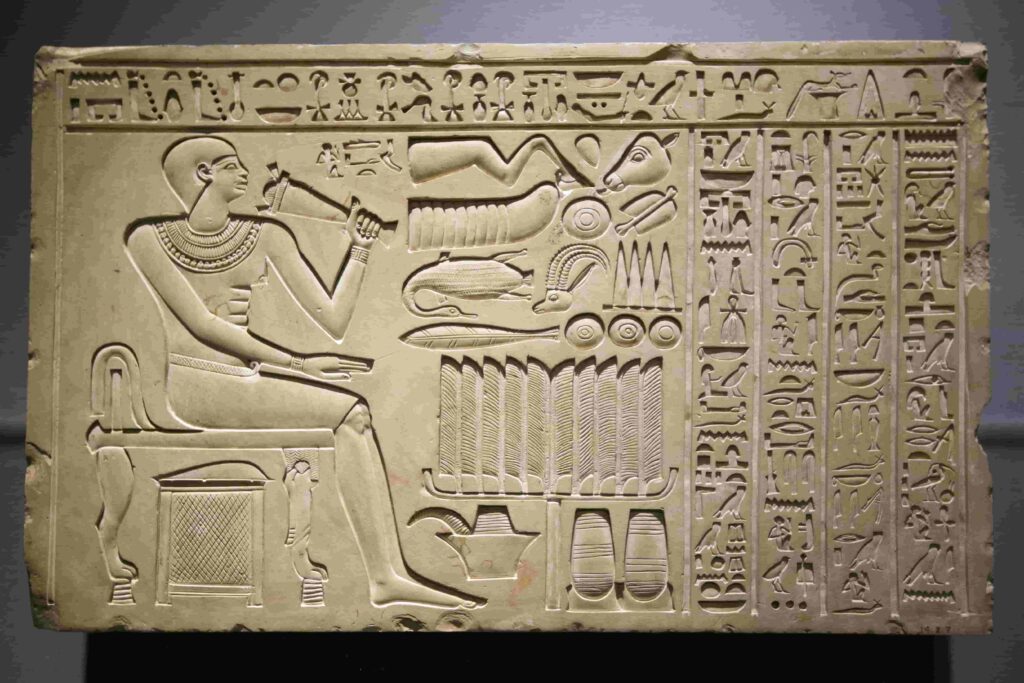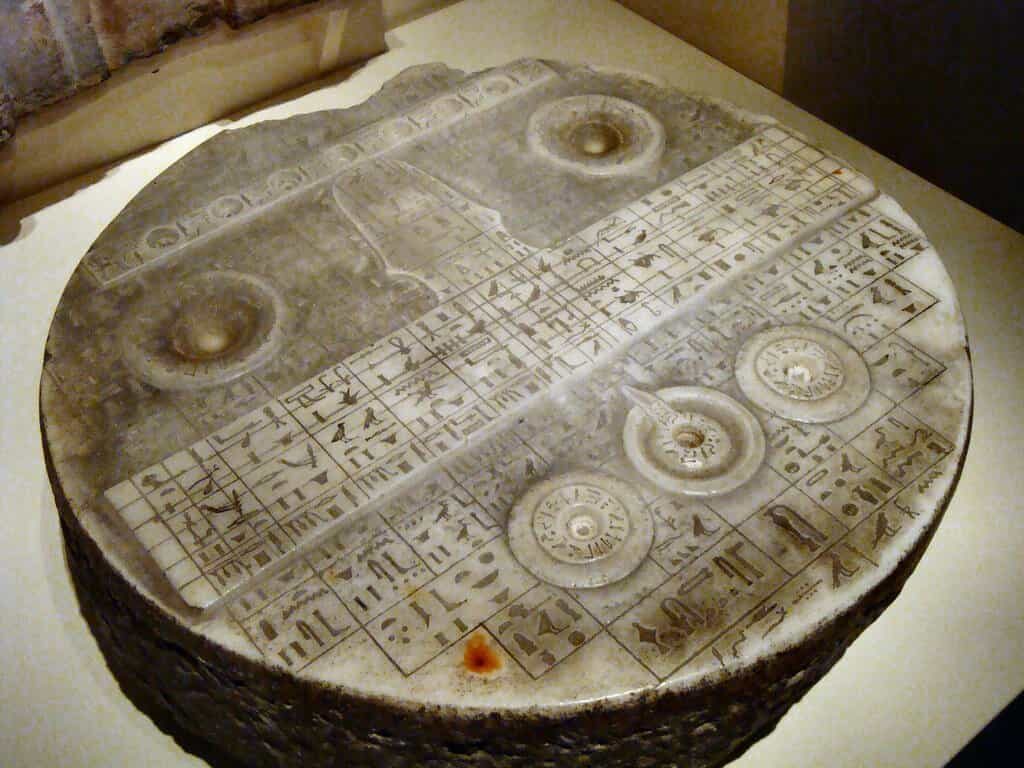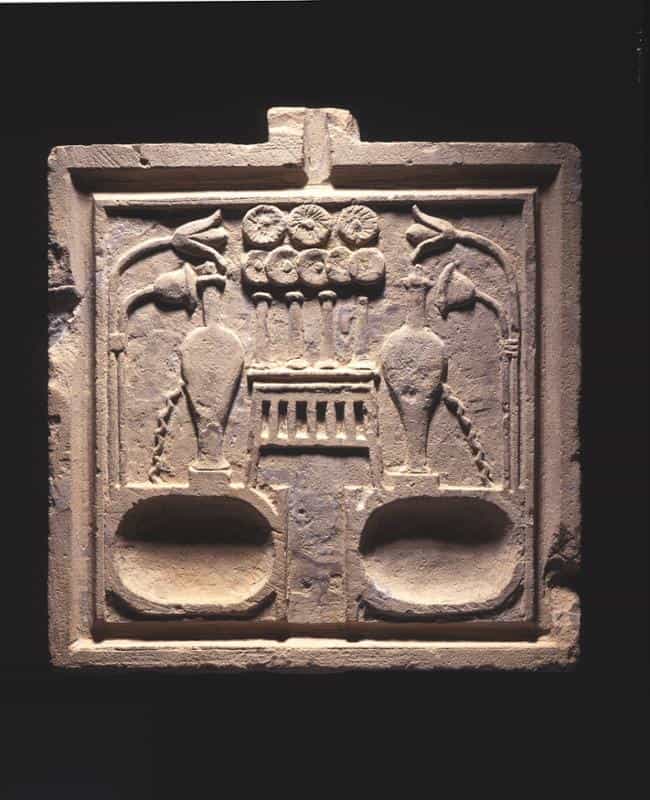The offering tables were among the most crucial items included in burials and were exclusively for funerary purposes.
At the inception of the Pharaonic civilization, the food offerings to the deceased were presented on plant mats. Later, during the Old Kingdom, these were replaced by stone tables that replicated the earlier ones. A wide array of foods and drinks were added over time, gradually increasing to a considerable amount.
Representation of offering tables could also be found on the walls of burial sites or on the False Door Steles.
In all instances, their primary function was to gather food and drinks so that, in a mystical manner, they would be available in case the fresh food meant for the deceased did not arrive punctually for their posthumous sustenance.
It was this very lack of certainty that led to the incorporation of an ever-increasing number of elements. The tables featured a channel for the offered liquids to flow over them and were shaped like the hieroglyph “Hotep,” which translates as “to be satisfied, at peace”.
In the case of stone-crafted specimens, the offering table was situated in an accessible place, allowing gifts to be placed upon it, thought to sustain the deceased after death.
Offering tables could be inscribed with sacred invocations and representations of Isis and Anubis.
These tables included various types of bread, geese, pigeons, beer, wine, water, oxen, and even items unrelated to food such as linen, alabaster, ointments, etc. If these couldn’t be physically reproduced, they could be mentioned in the hieroglyphic inscription on the table. Occasionally, this inscription was accompanied by the “banner,” a detailed and tabulated list of the offerings.
Offering Table of Defdji
The Remarkable Egyptian Artifact: Defdji’s ‘Offering Table’ Bearing Striking Resemblance to an Aircraft Control Panel
This unique circular offering table linked to Defdji is an exceptional masterpiece in terms of intricate details. Defdji, an official bearing significant titles such as ‘Acquaintance of the King,’ ‘Unique Friend,’ and ‘Great One of the Upper Egypt,’ owned this remarkable piece.
Crafted from white alabaster, the table boasts a thickness of 13 centimeters. Prominently featured across the middle in raised relief is the ‘hetep’ sign. Positioned above this sign are two dishes, while below it lie two small vases and a jug nestled within a bowl.
The entire surface of the table is meticulously divided into small compartments, each meticulously labeled with the name of a dish, beverage, or cleansing agent. Incredibly, there are over ninety distinct products cataloged on this piece.
The topmost panel of the table contains seven shallow cavities, each designed to accommodate a specific consecrated oil. These seven diverse oils were used to anoint the cult statue of the deceased, holding deep ritual significance.
Dating back to 2,200 BC, this astonishing artifact is housed at the Leiden Museum of Antiquities in the Netherlands.











